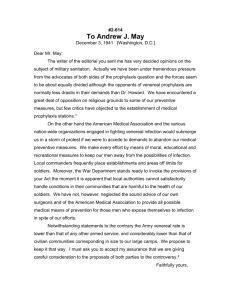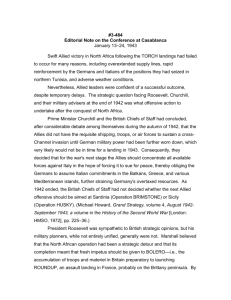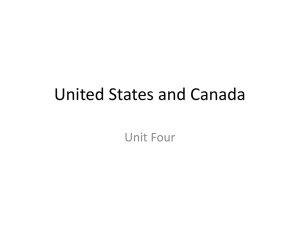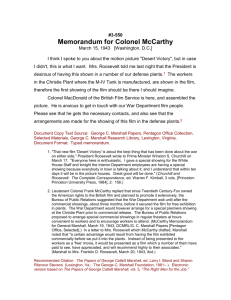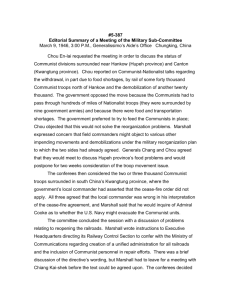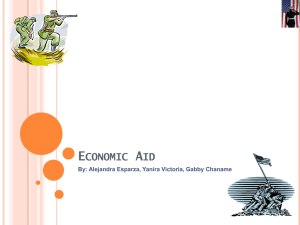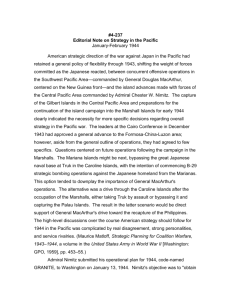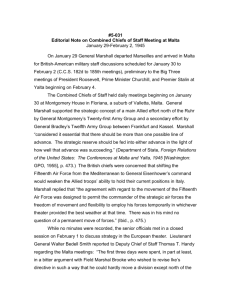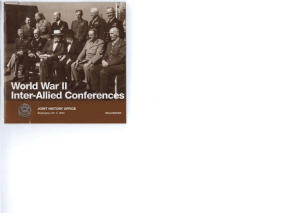4-085 - George C. Marshall Foundation
advertisement
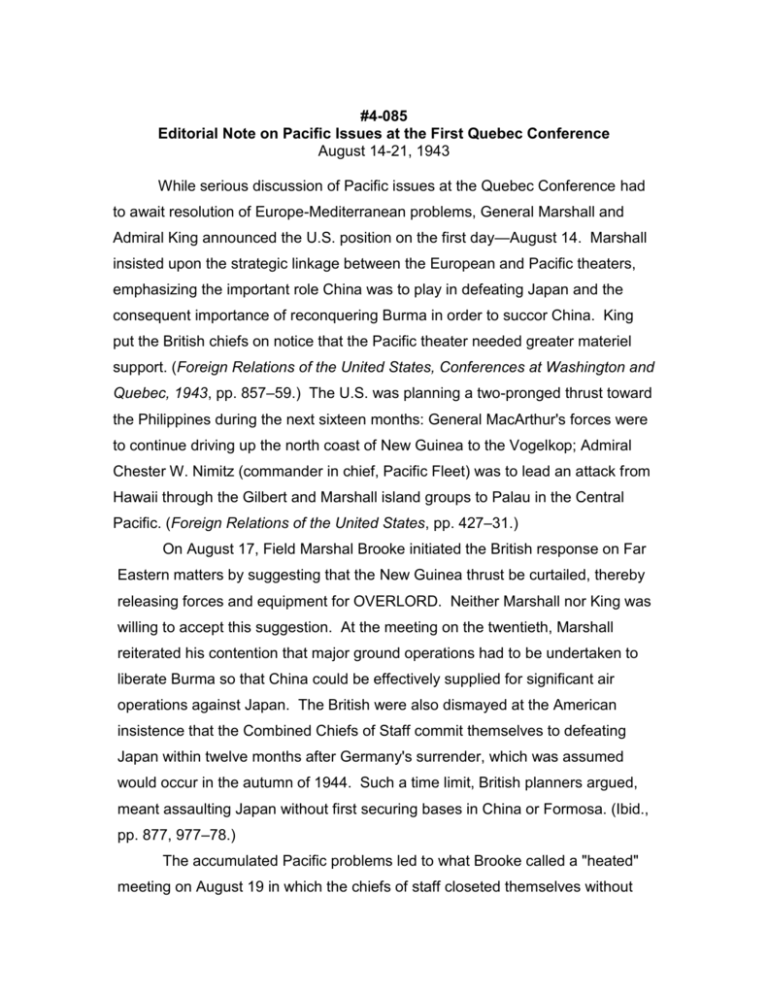
#4-085 Editorial Note on Pacific Issues at the First Quebec Conference August 14-21, 1943 While serious discussion of Pacific issues at the Quebec Conference had to await resolution of Europe-Mediterranean problems, General Marshall and Admiral King announced the U.S. position on the first day—August 14. Marshall insisted upon the strategic linkage between the European and Pacific theaters, emphasizing the important role China was to play in defeating Japan and the consequent importance of reconquering Burma in order to succor China. King put the British chiefs on notice that the Pacific theater needed greater materiel support. (Foreign Relations of the United States, Conferences at Washington and Quebec, 1943, pp. 857–59.) The U.S. was planning a two-pronged thrust toward the Philippines during the next sixteen months: General MacArthur's forces were to continue driving up the north coast of New Guinea to the Vogelkop; Admiral Chester W. Nimitz (commander in chief, Pacific Fleet) was to lead an attack from Hawaii through the Gilbert and Marshall island groups to Palau in the Central Pacific. (Foreign Relations of the United States, pp. 427–31.) On August 17, Field Marshal Brooke initiated the British response on Far Eastern matters by suggesting that the New Guinea thrust be curtailed, thereby releasing forces and equipment for OVERLORD. Neither Marshall nor King was willing to accept this suggestion. At the meeting on the twentieth, Marshall reiterated his contention that major ground operations had to be undertaken to liberate Burma so that China could be effectively supplied for significant air operations against Japan. The British were also dismayed at the American insistence that the Combined Chiefs of Staff commit themselves to defeating Japan within twelve months after Germany's surrender, which was assumed would occur in the autumn of 1944. Such a time limit, British planners argued, meant assaulting Japan without first securing bases in China or Formosa. (Ibid., pp. 877, 977–78.) The accumulated Pacific problems led to what Brooke called a "heated" meeting on August 19 in which the chiefs of staff closeted themselves without their staffs to resolve their differences off-the-record. Little was accomplished on the twentieth, as the British chiefs desired first to achieve an understanding regarding strategy with Prime Minister Churchill, who was opposed to operations in lower Burma and favored an invasion of northern Sumatra. (Bryant, Turn of the Tide, pp. 584–85.) Finally, on August 21, the British chiefs of staff presented a compromise document, which the American chiefs studied privately; further discussion, Brooke noted, "broke the final difficulties of this Conference and practically completed our work." (Ibid., p. 585.) The conferees adopted no long-range strategic blueprint for the Pacific war—that was left for a future conference—but the United States was given a free hand to launch its drive through the Central Pacific. The well-defended Japanese base at Rabaul was "to be neutralized rather than captured"—the first official pronouncement of what was to become the island-hopping strategy. The air route to China was to be improved and vigorous steps taken to defend it through operations in Burma. The urgency the U.S. felt to end the war quickly was ratified by adopting the goal of victory over Japan within a year of victory over Germany. (Foreign Relations of the United States, Conferences at Washington and Quebec, 1943, pp. 1125–28.) The Quebec Conference also ratified the creation of the Southeast Asia Command. The tangled command structure in the region, the endless trials of pursuing the war in that difficult climate and terrain, and the need for a fresh point of view had prompted Prime Minister Churchill to announce on June 18 that a new Allied command would be created separate from the command in India. The British wished to model the command on Eisenhower's Allied Force Headquarters in North Africa. But General Stilwell's situation did not fit that model, as he had to combine the functions of chief of staff to Chiang Kai-shek and commander of U.S. and Chinese forces in the area with his new duties as deputy supreme commander in Southeast Asia. When the command was discussed at the August 18 C.C.S. meeting, Marshall observed that the organization would of necessity be "abnormal." Stilwell's duties as deputy supreme commander would be limited; his main task was to see that Chinese forces and the U.S. Fourteenth Air Force played their parts in Burma operations. (Foreign Relations of the United States, Conferences at Washington and Quebec, 1943, p. 883; Charles F. Romanus and Riley Sunderland, Stilwell's Mission to China, a volume in the United States Army in World War II [Washington: GPO, 1953], pp. 355–60; Matloff, Strategic Planning for Coalition Warfare, 1943–1944, pp. 237–40.) Recommended Citation: The Papers of George Catlett Marshall, ed. Larry I. Bland and Sharon Ritenour Stevens (Lexington, Va.: The George C. Marshall Foundation, 1981– ). Electronic version based on The Papers of George Catlett Marshall, vol. 4, “Aggressive and Determined Leadership,” June 1, 1943–December 31, 1944 (Baltimore and London: The Johns Hopkins University Press, 1996), pp. 94–95.

